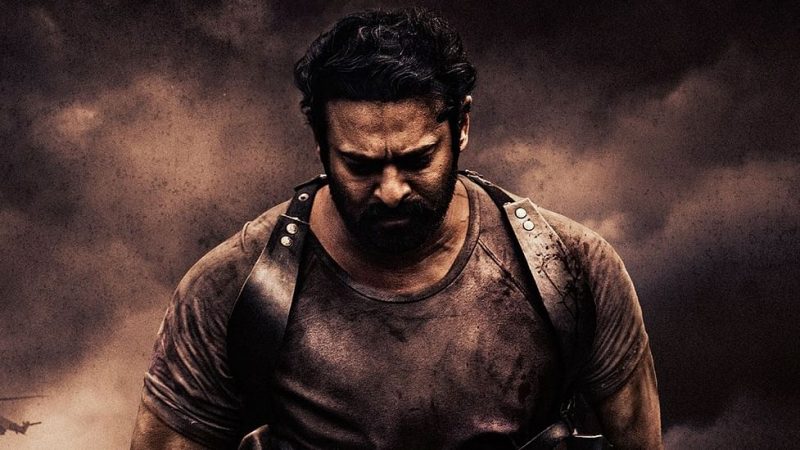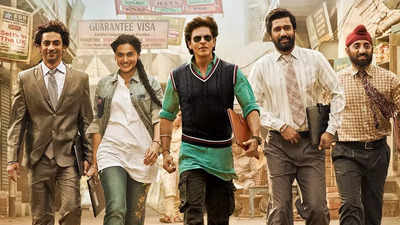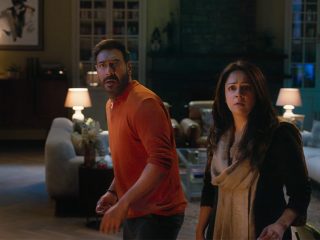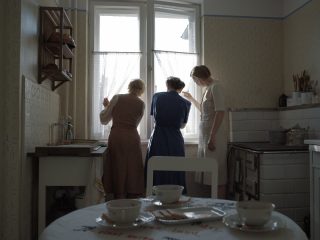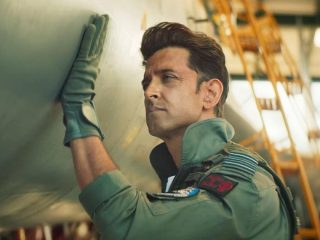“Salaar” is a movie of buildups. Similar to another movie (Bahubali), which catapulted the lead of this movie to superstardom, this movie is entirely set up towards an eventual payoff. But even within the structure of the film itself, the setups are all different.
Taking place within three timelines (1985, 2010, and 2017), the 2017 timeline constitutes the first half of the film, and it follows the “Baasha” template: a protagonist who is quiet and peaceful but has a violent past and is reluctant to indulge in that past again. The movie takes a long time to build up to the eventual revelation of what the past entails, but Neel’s use of slow-motion and slow and steady reveals is equal parts rewarding and at times exhausting. Utilizing Prabhas’ strength here might be a boon in some instances. Prabhas’ physicality and sparse dialogues help in selling the reluctance and the catharsis when the film and even Neel allow you to indulge in some glorious and over-the-top set pieces. The protagonist is also driven by the commands of his mother to stay hidden and keep his strength in check. As the 1985 flashback shows at the beginning of the film before the opening credits, a young Deva is completely driven by loyalty and friendship towards his friend Vardharajan Munnar and would even hold onto an open wire and risk being electrocuted to death if only to defeat a larger opponent and help Vardharajan regain his dignity back. This leads to Vardharajan taking a drastic step that has larger political ramifications in the future and forces Deva and his mother to escape from the walled city of Khaansar that they call home.
But Vardharajan and even Deva’s mother know the bloodlust and anger that drive the killing machine that is Deva, which is why a circuitous scheme is hatched to ensure that Aadya (Shruti Haasan) is waylaid towards the protective hands of Deva such that she would not be harmed by her enemies looking for her. But as inevitable as that plan is, the foiling of that plan is equally so, leading to a bloody battle and the revelation of Deva’s anger and fighting prowess. But it also reveals that the first half of the film is the buildup to the events of the second film.
The first half, though, has problems, and major ones in that it is hard to be invested in the character of Aadya, or Deva’s mother, and Deva is designed to be cold and distant. But that level of engagement changes in the second half when the “Baasha” template allows for the inevitable sojourn to the past (2010), leading to the strongest section of the film—worldbuilding. Khanssar, with its design, its architecture, and its worldbuilding, feels very much like India’s answer to Wakanda, a futuristic land affected by technological advancements but whose aesthetic still screams the sensibilities of a community largely unaffected by the outside world. But it is Khaansar’s world with its politics and backstabbing that leads to the eventual “ceasefire” and its breakage, which constitutes the majority of the film.
Amidst it all is a cast of characters led by Prithviraj Sukumaran’s Vardharajan, who is physically imposing but is also legitimately scared of Deva’s bloodlust. One of the best action set-pieces of this film, with some of the most violent imagery in an already violent and gory motion picture, rests completely in Neel’s dexterity of staging and building up of these sequences as well as Sukumaran’s depiction of Vardha knowing that his best friend is an uncontrollable beast, a weapon of mass destruction that he is glad to be on the same side of.
But Salaar would not work without Neel’s hold on the drama and the political backstabbing that lies at the center of this film. It is a mixture of several inspirations that Neel takes, but Neel never forgets to put his spin on it. It runs the risk of exhausting the audience, and when the movie has a runtime of 176 minutes, it could be exhausting. But for fans of brutal and hardcore action, gone are the rapid and incomprehensible editing of the first KGF, or the innumerable elevation shots and entry sequences. Neel crafts the movie with interminable build-ups, knowing full well that the payoffs need to be visceral and cathartic as a result. It would be a crime to suggest that he doesn’t deliver, or that the dopamine rush on seeing a limb being decapitated or a pan shot showing a bloody Vardha (with two swords) and Deva with his bloody fists readying themselves to battle human beings drugged to act like zombies (watch the movie) isn’t cathartic.
It’s a pulpy spectacle, a mass movie perhaps too overburdened with its buildup to give way to a satisfactory payoff. There is a risk of the movie not delivering on its second half, and prior films of Neel (the KGF series) would suggest that, but in a vacuum, Salaar is fun. It does not have the wall-to-wall action set-pieces one might expect, Neel, choosing to front-load a majority of it towards the end, but it has character drama and the fictional world with its politics that should be a draw for people looking to get lost in a fictional landscape. Ravi Basrur’s score, though, feels repetitive and muted, but the cinematography and color palette are still slightly different from the KGF series while calling back to Neel’s most famous work. It also knows how to use its star’s physicality without getting bogged down by the star’s weakness, though Prabhas doesn’t have Yash’s indisputable swagger and charm. But Sukumaran, as Vardha, more than holds the rear, purring forth the promise of an even meatier and antagonistic role in the second movie.

